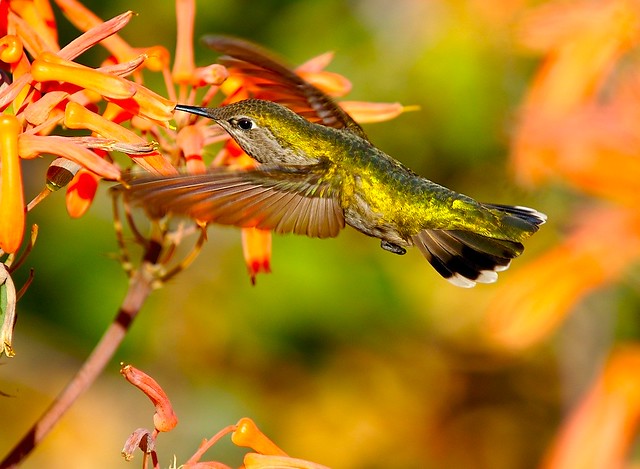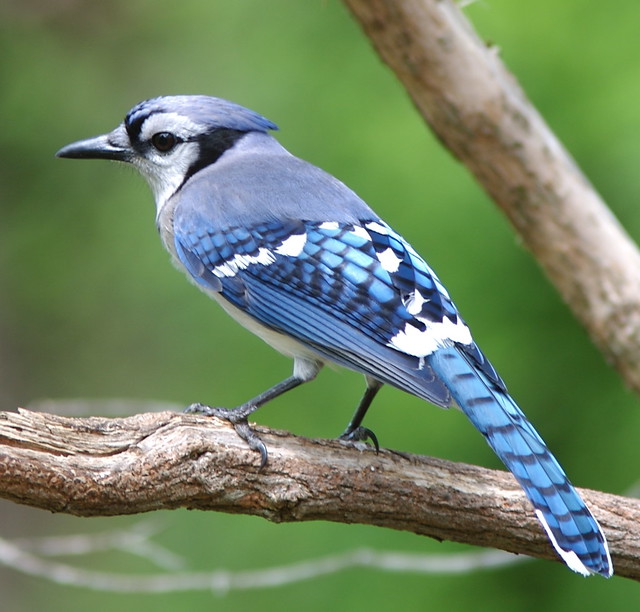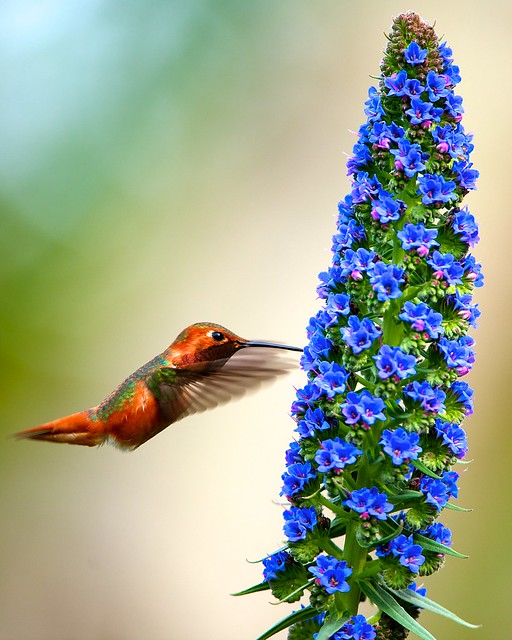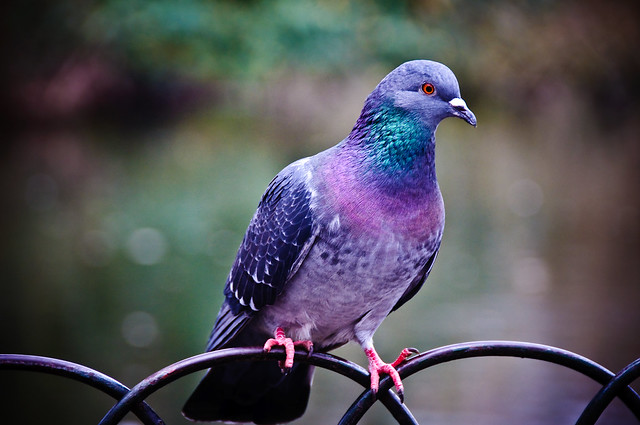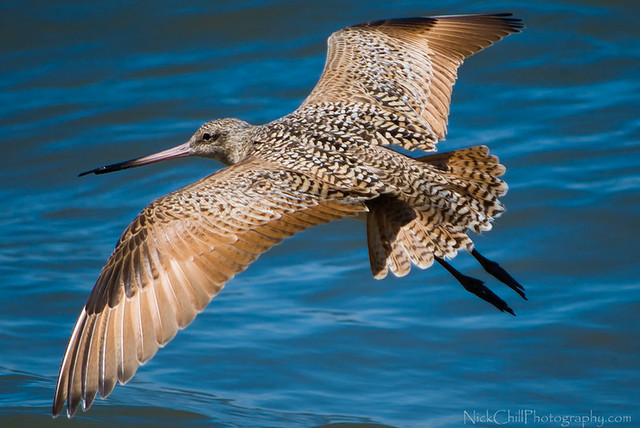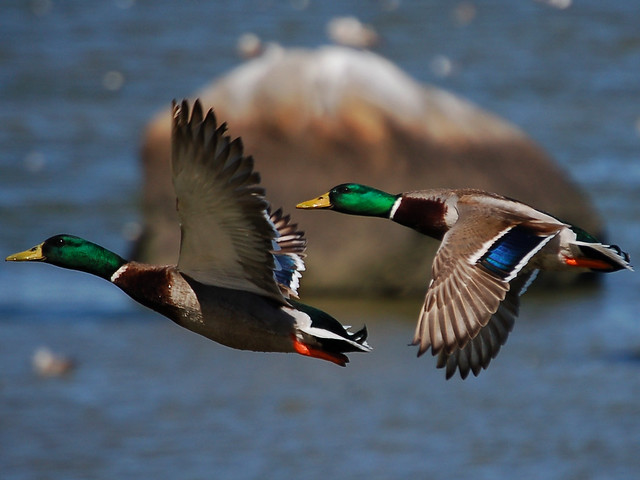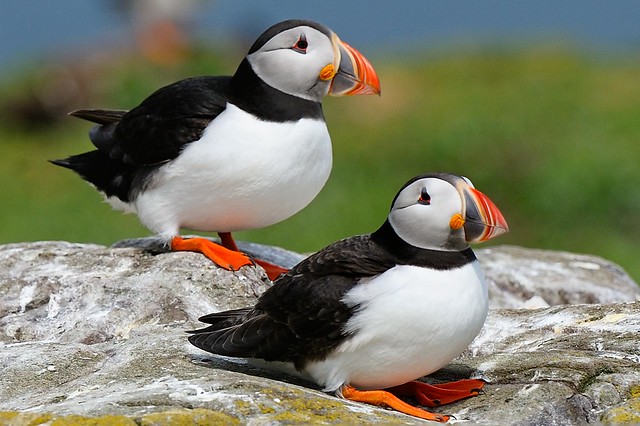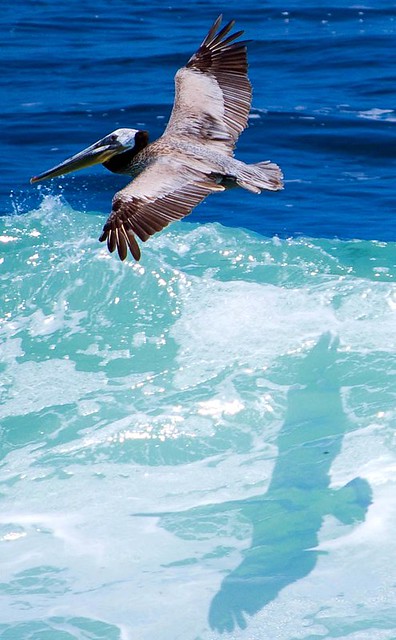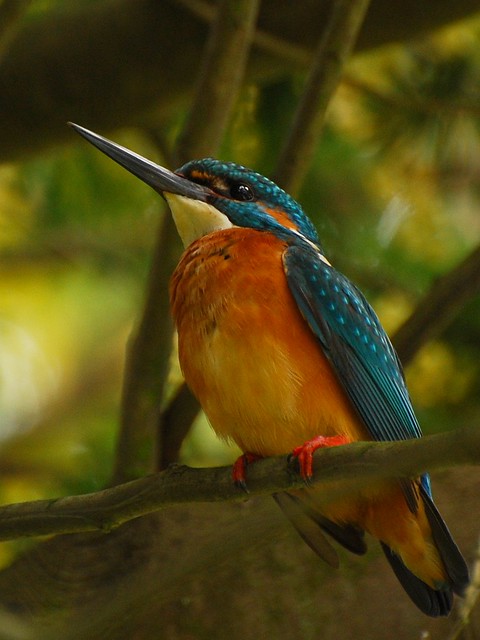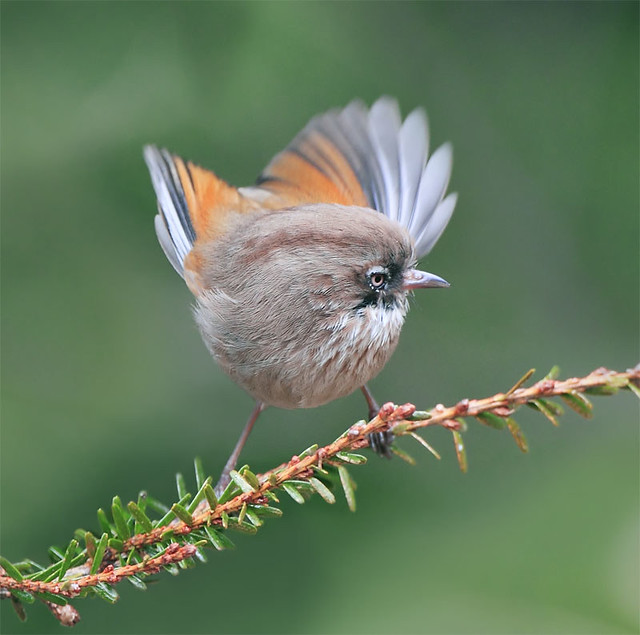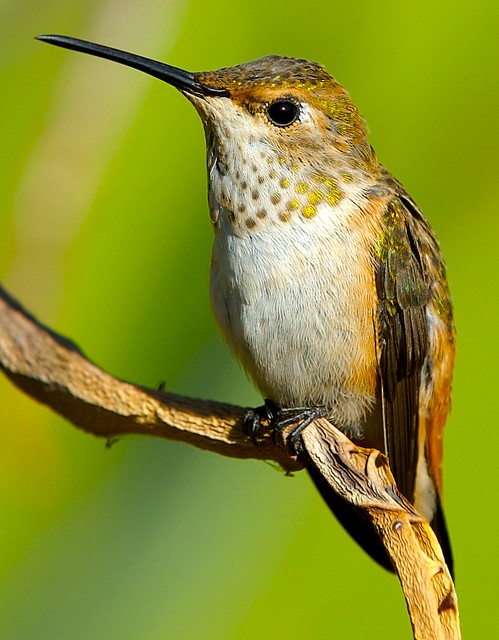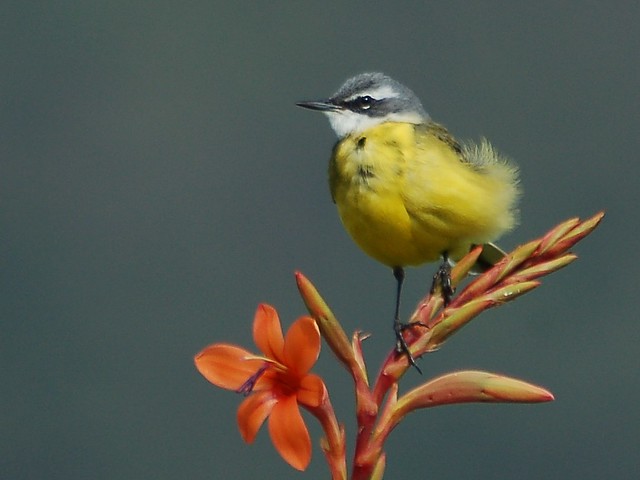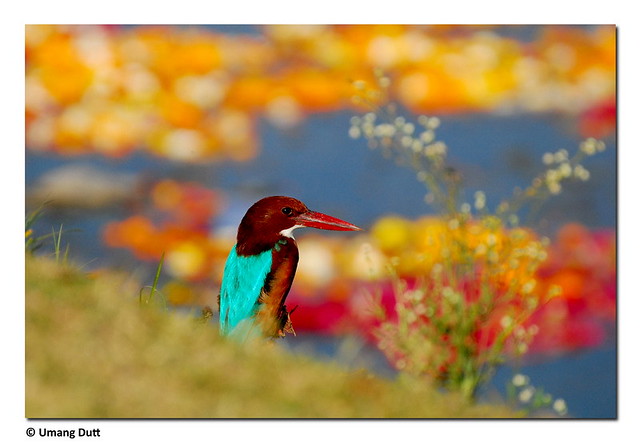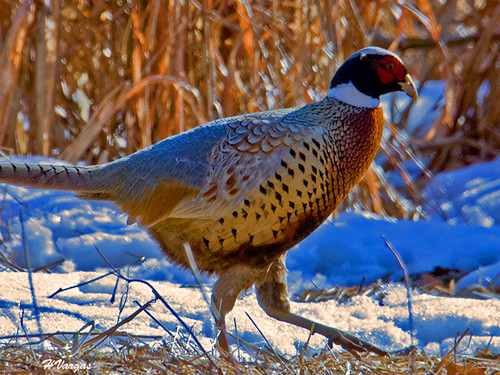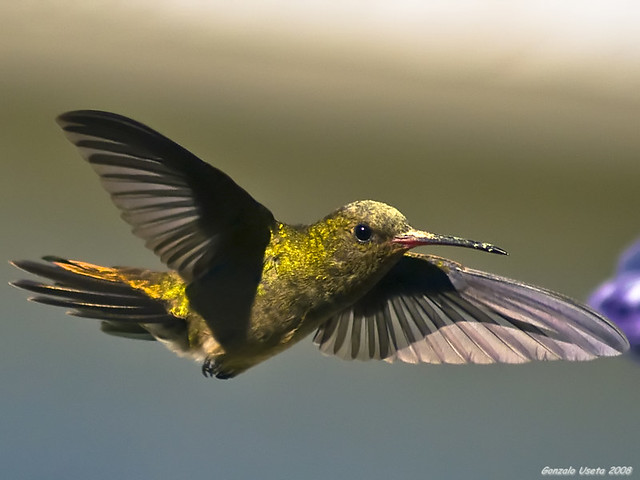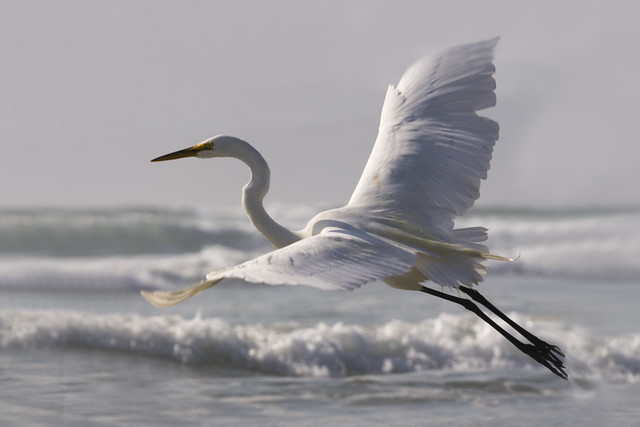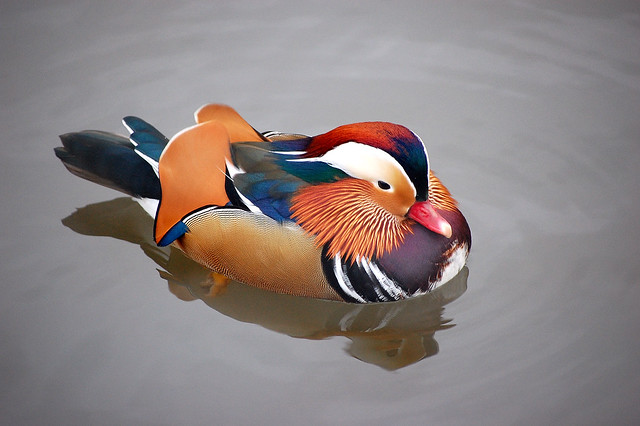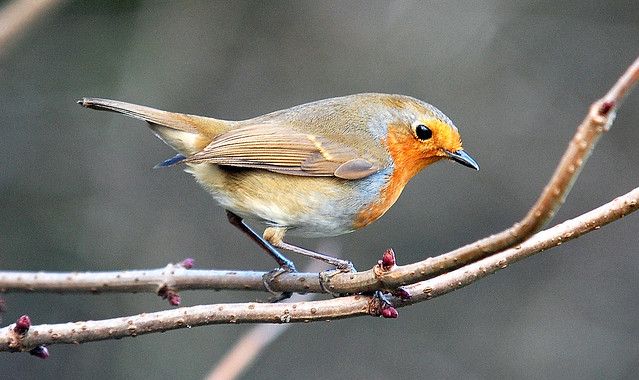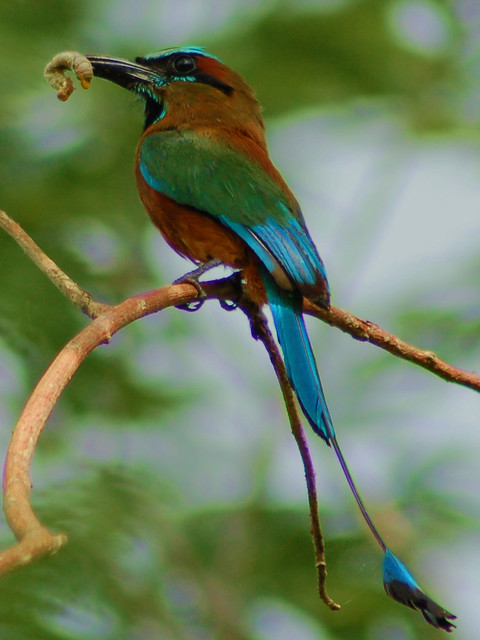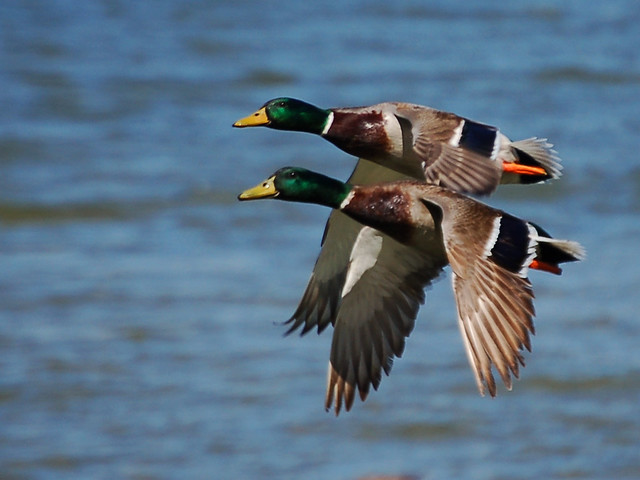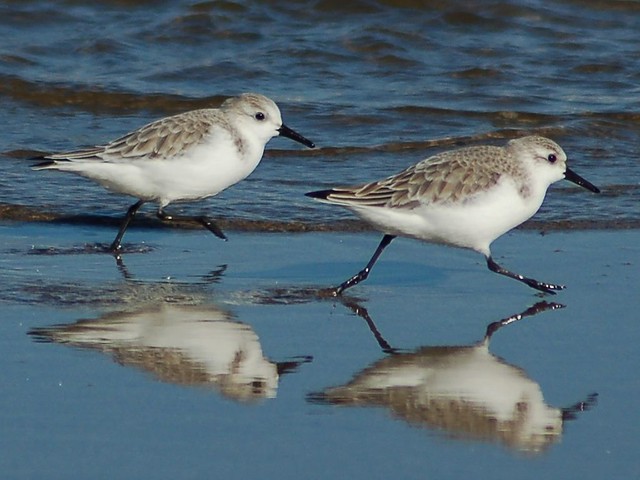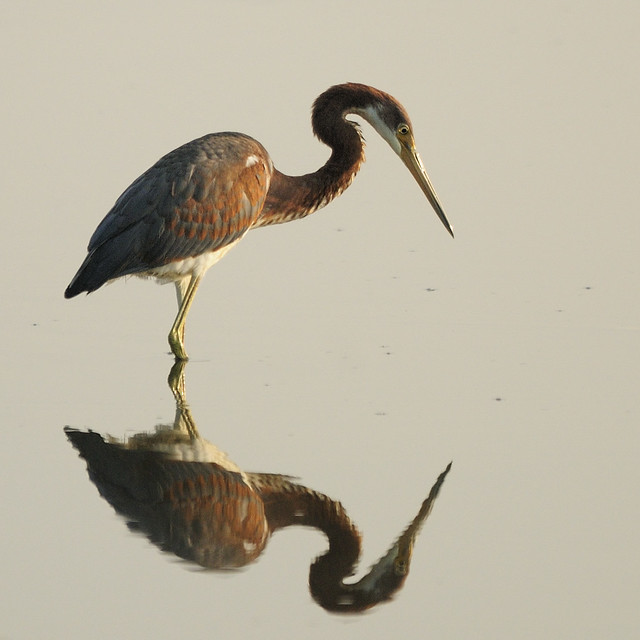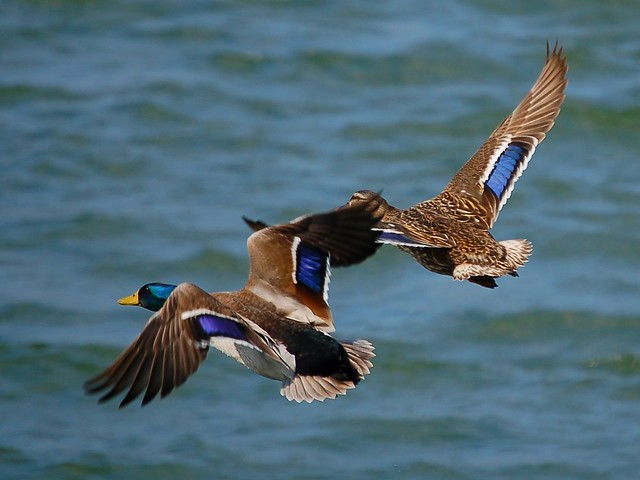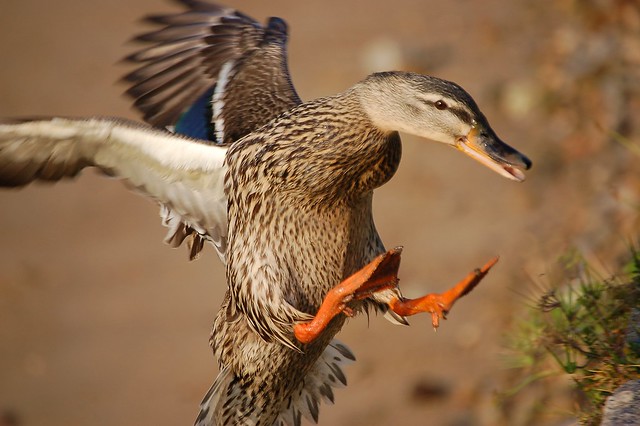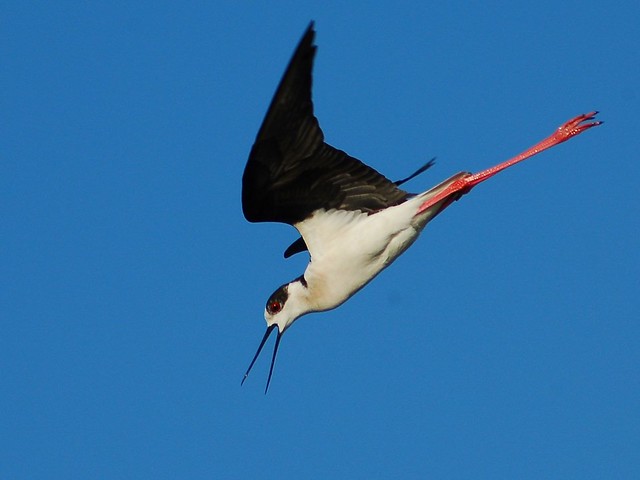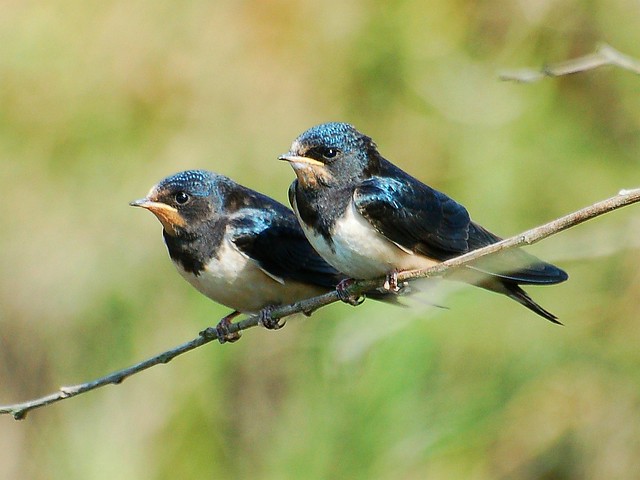RED KITE: A BEAUTIFUL RAPTOR IN DANGER OF EXTINCTION
 Red Kite (Milvus milvus). Immature. 27.12.2010 (Ángel Sánchez)
Red Kite (Milvus milvus). Immature. 27.12.2010 (Ángel Sánchez)The Red Kite (Milvus milvus) has just been officially listed as a species "In danger of extinction" in the new Spanish catalogue of threatened species. The reason for this sad milestone is the dramatic plunge in its population due to the illegal use of poisoned bait. Over 200 poisoned Red Kites have been found in Spain over the last five years, although SEO/BirdLife puts the real figure much higher at about 7000. More than a thousand a year! A staggering figure and a tragic toll on this and other raptors.
The Red Kite is endemic to Europe and is hence one of the best known birds of prey. The ample information to hand shows a drastic population change in recent decades, varying from region to region. Numbers have built up to unprecedented levels in Sweden, Switzerland and the UK, while the population has plummeted to an all-time low in the Iberian Peninsula, France and maybe Germany as well. This trend prompted an international symposium in France in 2009 to weigh up the global situation of the species. Although a couple of years have passed since then it is still worthwhile summing up the main findings of that meeting.
* The Red Kite breeds regularly in 20 countries, all in Europe, and its worldwide population is reckoned to be 20,700 to 24,900 pairs.
* Germany accounts for 50%; France and Spain together another 20%; and the UK, Sweden and Switzerland another 20%. This means that 90% of the population breeds in only six countries.
* The overall C20th trend was downwards. From 1990 to 2000 it increased in a few countries but numbers continued to fall in Germany, France and Spain. After 2000 it continued to fall in France and Spain, held steady in Germany and increased in some countries where more and more birds are now overwintering, like UK, Switzerland, Italy and Sweden (Aebischer, 2009).
* In Spain the last Red Kite count was carried out in 2004, with an estimated figure of about 2100 pairs, 46% down on the previous count of 1994. The estimated wintering population in 2004 was 36,000 birds, half of the estimated 70,000 figure ten years earlier (Cardiel, 2006).
* In Extremadura the 2005 count throws up a figure of 250-310 breeding pairs and 7700 wintering birds. The trend is bleak with a 65% breeding-season decline in 10 years (85% in Badajoz). The decline in the wintering population was less, 33%, albeit centred solely in Badajoz (Prieta, 2007).
* In recent years a greater inflow into the Iberian Peninsual through the western Pyrenees has been detected (Urcun and Codaccioni, 2009).
.


 Sources:
Sources:- Aebischer, A. 2009. Distribution and recent population changes of the Red Kite in the Western Palaearctic - results of a recent comprehensive inquiry. Proceedings of the Red Kite international Symposium, October 17th & 18th 2009, Montbéliard, France.
- Cardiel, I. 2006. El milano real en España. II censo nacional (2004). SEO/BirdLife. Madrid.
- Prieta, J. 2007. El milano real en Extremadura (1994-2005). Unpublished report for SEO/BirdLife.
- Urcun, J. P. & Codaccioni, O. F. 2009. The Migration of the Red Kite over the Pyrenees. Proceedings of the Red Kite international Symposium, October 17th & 18th 2009, Montbéliard, France.
 Red Kite (Milvus milvus). Immature. 27.12.2010 (Ángel Sánchez)
Red Kite (Milvus milvus). Immature. 27.12.2010 (Ángel Sánchez)The Red Kite (Milvus milvus) has just been officially listed as a species "In danger of extinction" in the new Spanish catalogue of threatened species. The reason for this sad milestone is the dramatic plunge in its population due to the illegal use of poisoned bait. Over 200 poisoned Red Kites have been found in Spain over the last five years, although SEO/BirdLife puts the real figure much higher at about 7000. More than a thousand a year! A staggering figure and a tragic toll on this and other raptors.
The Red Kite is endemic to Europe and is hence one of the best known birds of prey. The ample information to hand shows a drastic population change in recent decades, varying from region to region. Numbers have built up to unprecedented levels in Sweden, Switzerland and the UK, while the population has plummeted to an all-time low in the Iberian Peninsula, France and maybe Germany as well. This trend prompted an international symposium in France in 2009 to weigh up the global situation of the species. Although a couple of years have passed since then it is still worthwhile summing up the main findings of that meeting.
* The Red Kite breeds regularly in 20 countries, all in Europe, and its worldwide population is reckoned to be 20,700 to 24,900 pairs.
* Germany accounts for 50%; France and Spain together another 20%; and the UK, Sweden and Switzerland another 20%. This means that 90% of the population breeds in only six countries.
* The overall C20th trend was downwards. From 1990 to 2000 it increased in a few countries but numbers continued to fall in Germany, France and Spain. After 2000 it continued to fall in France and Spain, held steady in Germany and increased in some countries where more and more birds are now overwintering, like UK, Switzerland, Italy and Sweden (Aebischer, 2009).
* In Spain the last Red Kite count was carried out in 2004, with an estimated figure of about 2100 pairs, 46% down on the previous count of 1994. The estimated wintering population in 2004 was 36,000 birds, half of the estimated 70,000 figure ten years earlier (Cardiel, 2006).
* In Extremadura the 2005 count throws up a figure of 250-310 breeding pairs and 7700 wintering birds. The trend is bleak with a 65% breeding-season decline in 10 years (85% in Badajoz). The decline in the wintering population was less, 33%, albeit centred solely in Badajoz (Prieta, 2007).
* In recent years a greater inflow into the Iberian Peninsual through the western Pyrenees has been detected (Urcun and Codaccioni, 2009).
.


 Sources:
Sources:- Aebischer, A. 2009. Distribution and recent population changes of the Red Kite in the Western Palaearctic - results of a recent comprehensive inquiry. Proceedings of the Red Kite international Symposium, October 17th & 18th 2009, Montbéliard, France.
- Cardiel, I. 2006. El milano real en España. II censo nacional (2004). SEO/BirdLife. Madrid.
- Prieta, J. 2007. El milano real en Extremadura (1994-2005). Unpublished report for SEO/BirdLife.
- Urcun, J. P. & Codaccioni, O. F. 2009. The Migration of the Red Kite over the Pyrenees. Proceedings of the Red Kite international Symposium, October 17th & 18th 2009, Montbéliard, France.
WINTERING QUAIL: A MUDDY PICTURE
 The Common Quail (Coturnix coturnix) is a highly mobile species, especially the males, which move around at random in the breeding season in search of females. This mobility is the response to a complex reproduction system, without territory, and their particular breeding habitat, unirrigated cropland, which often changes its position from one season or year to another. Quails in fact may well breed more than once a year in Europe, first in the south and then further north. When the cereal crop is harvested they are forced to move anew; on the Iberian Peninsula they usually congregate in the meseta norte, where the crop is harvested latest in the year. Lastly, come autumn, they move off to Africa. Not all of them, however; a few wintering birds do stay behind. For example during the field work of the Atlas of Wintering Birds in Spain there were 112 contacts over three winters (2007-2010), 31 of them in Extremadura; Badajoz is the Spanish province with most wintering Quails (22 contacts). The provisional map below shows the places where these wintering Quails were found (sampled grids shown in red, grids with wintering quail shown in blue).
The Common Quail (Coturnix coturnix) is a highly mobile species, especially the males, which move around at random in the breeding season in search of females. This mobility is the response to a complex reproduction system, without territory, and their particular breeding habitat, unirrigated cropland, which often changes its position from one season or year to another. Quails in fact may well breed more than once a year in Europe, first in the south and then further north. When the cereal crop is harvested they are forced to move anew; on the Iberian Peninsula they usually congregate in the meseta norte, where the crop is harvested latest in the year. Lastly, come autumn, they move off to Africa. Not all of them, however; a few wintering birds do stay behind. For example during the field work of the Atlas of Wintering Birds in Spain there were 112 contacts over three winters (2007-2010), 31 of them in Extremadura; Badajoz is the Spanish province with most wintering Quails (22 contacts). The provisional map below shows the places where these wintering Quails were found (sampled grids shown in red, grids with wintering quail shown in blue). But a curious event begs new questions. On 04/12/2010 in Navalvillar de Pela (Badajoz) a hunter was seen carrying a shot Quail (S. Mayordomo, C. Clemente and J. Mahíllo). Nothing extraordinary about this because Quail are known to winter here sometimes. A few days later, on 20/12/2010, three people were seen releasing Quail in another part of the same area, three complete crates of birds; they then started shooting at them forthwith, killing at least six (Á. Sánchez). This unexpected event, perhaps a one-off, poses doubts about whether the wintering Quail are natural. We know for sure only about this one case of deliberate Quail release in winter and winter Quail observations are fairly widespread, so the logical conclusion to draw is that wild birds do winter. This is borne out by studies conducted in Portugal which show the presence of migratory birds from September to December and sedentary birds from December to March, when the first migrants return from Africa. The proportion of migrants, judging from body fat, peaks in October (40-50%) and there are always more migrants in the north than in the south, where up to 70% of the birds are non migrators. Autumn density is usually high, up to 130 Quails per km2. Sedentary birds start breeding very early in the year, singing as from November and pairing off as from December. They breed before the migratory birds and the first brood is itself able to breed after a few months in their first summer. This sedentary behaviour seems to be recent, as the result of changes in farming practices. Although Portuguese authors argue that the same thing happens in north Africa and part of Spain, including Extremadura, there is no actual information to confirm this. In fact there are no known records of singing Quail in Extremadura in December or January (the first are heard in February) and winter records, even allowing for the specie's retiring habits and low detectability, are still few and far between (only nine from 2005 to 2008).
But a curious event begs new questions. On 04/12/2010 in Navalvillar de Pela (Badajoz) a hunter was seen carrying a shot Quail (S. Mayordomo, C. Clemente and J. Mahíllo). Nothing extraordinary about this because Quail are known to winter here sometimes. A few days later, on 20/12/2010, three people were seen releasing Quail in another part of the same area, three complete crates of birds; they then started shooting at them forthwith, killing at least six (Á. Sánchez). This unexpected event, perhaps a one-off, poses doubts about whether the wintering Quail are natural. We know for sure only about this one case of deliberate Quail release in winter and winter Quail observations are fairly widespread, so the logical conclusion to draw is that wild birds do winter. This is borne out by studies conducted in Portugal which show the presence of migratory birds from September to December and sedentary birds from December to March, when the first migrants return from Africa. The proportion of migrants, judging from body fat, peaks in October (40-50%) and there are always more migrants in the north than in the south, where up to 70% of the birds are non migrators. Autumn density is usually high, up to 130 Quails per km2. Sedentary birds start breeding very early in the year, singing as from November and pairing off as from December. They breed before the migratory birds and the first brood is itself able to breed after a few months in their first summer. This sedentary behaviour seems to be recent, as the result of changes in farming practices. Although Portuguese authors argue that the same thing happens in north Africa and part of Spain, including Extremadura, there is no actual information to confirm this. In fact there are no known records of singing Quail in Extremadura in December or January (the first are heard in February) and winter records, even allowing for the specie's retiring habits and low detectability, are still few and far between (only nine from 2005 to 2008).Sources:
- Catry, P., Costa, H., Elias, G., and Matias, R. 2010. Aves de Portugal. Ornitologia do territorio continental. Assirio & Alvin. Lisbon.
- Anuarios Ornitológicos de Extremadura (Aves de Extremadura) 1998-2008.
 The Common Quail (Coturnix coturnix) is a highly mobile species, especially the males, which move around at random in the breeding season in search of females. This mobility is the response to a complex reproduction system, without territory, and their particular breeding habitat, unirrigated cropland, which often changes its position from one season or year to another. Quails in fact may well breed more than once a year in Europe, first in the south and then further north. When the cereal crop is harvested they are forced to move anew; on the Iberian Peninsula they usually congregate in the meseta norte, where the crop is harvested latest in the year. Lastly, come autumn, they move off to Africa. Not all of them, however; a few wintering birds do stay behind. For example during the field work of the Atlas of Wintering Birds in Spain there were 112 contacts over three winters (2007-2010), 31 of them in Extremadura; Badajoz is the Spanish province with most wintering Quails (22 contacts). The provisional map below shows the places where these wintering Quails were found (sampled grids shown in red, grids with wintering quail shown in blue).
The Common Quail (Coturnix coturnix) is a highly mobile species, especially the males, which move around at random in the breeding season in search of females. This mobility is the response to a complex reproduction system, without territory, and their particular breeding habitat, unirrigated cropland, which often changes its position from one season or year to another. Quails in fact may well breed more than once a year in Europe, first in the south and then further north. When the cereal crop is harvested they are forced to move anew; on the Iberian Peninsula they usually congregate in the meseta norte, where the crop is harvested latest in the year. Lastly, come autumn, they move off to Africa. Not all of them, however; a few wintering birds do stay behind. For example during the field work of the Atlas of Wintering Birds in Spain there were 112 contacts over three winters (2007-2010), 31 of them in Extremadura; Badajoz is the Spanish province with most wintering Quails (22 contacts). The provisional map below shows the places where these wintering Quails were found (sampled grids shown in red, grids with wintering quail shown in blue). But a curious event begs new questions. On 04/12/2010 in Navalvillar de Pela (Badajoz) a hunter was seen carrying a shot Quail (S. Mayordomo, C. Clemente and J. Mahíllo). Nothing extraordinary about this because Quail are known to winter here sometimes. A few days later, on 20/12/2010, three people were seen releasing Quail in another part of the same area, three complete crates of birds; they then started shooting at them forthwith, killing at least six (Á. Sánchez). This unexpected event, perhaps a one-off, poses doubts about whether the wintering Quail are natural. We know for sure only about this one case of deliberate Quail release in winter and winter Quail observations are fairly widespread, so the logical conclusion to draw is that wild birds do winter. This is borne out by studies conducted in Portugal which show the presence of migratory birds from September to December and sedentary birds from December to March, when the first migrants return from Africa. The proportion of migrants, judging from body fat, peaks in October (40-50%) and there are always more migrants in the north than in the south, where up to 70% of the birds are non migrators. Autumn density is usually high, up to 130 Quails per km2. Sedentary birds start breeding very early in the year, singing as from November and pairing off as from December. They breed before the migratory birds and the first brood is itself able to breed after a few months in their first summer. This sedentary behaviour seems to be recent, as the result of changes in farming practices. Although Portuguese authors argue that the same thing happens in north Africa and part of Spain, including Extremadura, there is no actual information to confirm this. In fact there are no known records of singing Quail in Extremadura in December or January (the first are heard in February) and winter records, even allowing for the specie's retiring habits and low detectability, are still few and far between (only nine from 2005 to 2008).
But a curious event begs new questions. On 04/12/2010 in Navalvillar de Pela (Badajoz) a hunter was seen carrying a shot Quail (S. Mayordomo, C. Clemente and J. Mahíllo). Nothing extraordinary about this because Quail are known to winter here sometimes. A few days later, on 20/12/2010, three people were seen releasing Quail in another part of the same area, three complete crates of birds; they then started shooting at them forthwith, killing at least six (Á. Sánchez). This unexpected event, perhaps a one-off, poses doubts about whether the wintering Quail are natural. We know for sure only about this one case of deliberate Quail release in winter and winter Quail observations are fairly widespread, so the logical conclusion to draw is that wild birds do winter. This is borne out by studies conducted in Portugal which show the presence of migratory birds from September to December and sedentary birds from December to March, when the first migrants return from Africa. The proportion of migrants, judging from body fat, peaks in October (40-50%) and there are always more migrants in the north than in the south, where up to 70% of the birds are non migrators. Autumn density is usually high, up to 130 Quails per km2. Sedentary birds start breeding very early in the year, singing as from November and pairing off as from December. They breed before the migratory birds and the first brood is itself able to breed after a few months in their first summer. This sedentary behaviour seems to be recent, as the result of changes in farming practices. Although Portuguese authors argue that the same thing happens in north Africa and part of Spain, including Extremadura, there is no actual information to confirm this. In fact there are no known records of singing Quail in Extremadura in December or January (the first are heard in February) and winter records, even allowing for the specie's retiring habits and low detectability, are still few and far between (only nine from 2005 to 2008).Sources:
- Catry, P., Costa, H., Elias, G., and Matias, R. 2010. Aves de Portugal. Ornitologia do territorio continental. Assirio & Alvin. Lisbon.
- Anuarios Ornitológicos de Extremadura (Aves de Extremadura) 1998-2008.
Rock Pipits
Due to weather and feeding stations not bringing many birds in, i ordered some more meal worms and went looking for Rock Pipit.
1 Bird caught yesterday in spring trap and seen again today
Colour rings showing well
This bird was first ringed at Port Mooar with BTO metal back on the 03/08/2010
before we started colour ringing them.
Re caught yesterday in Ramsey near the Lifeboat station and colour rings added
 |
| Click to enlarge |
2 New birds caught today and colour ringed
to see the colour ring projects we are involved in click link below
Due to weather and feeding stations not bringing many birds in, i ordered some more meal worms and went looking for Rock Pipit.
1 Bird caught yesterday in spring trap and seen again today
Colour rings showing well
This bird was first ringed at Port Mooar with BTO metal back on the 03/08/2010
before we started colour ringing them.
Re caught yesterday in Ramsey near the Lifeboat station and colour rings added
 |
| Click to enlarge |
2 New birds caught today and colour ringed
to see the colour ring projects we are involved in click link below
SWAROVSKI CHOOSE EXTREMADURA
 Swarovski, the well known manufacturer of top-range optics, chose Extremadura for the international presentation of its new binoculars, Swarovision EL 12x50. A group of 25 people from different countries, mostly Europeans but also from United States and South Africa, had the privilege of trying out the new bins in the field, even before they come on the market. From 10 to 14 February 2011 they toured Extremadura, visiting the birdwatching hotspots: Monfragüe, Llanos de Cáceres-Trujillo and Vegas Altas del Guadiana. The guests included leading figures from the birdwatching world, such as tour guides, photographers, publishers, organisers of bird fairs and birdwatching competitions, among others. Extremadura, thanks to Swarovski, will therefore be featuring widely in the news over the coming weeks. As part of the promotion a small website was set up with various images of Monfragüe, plus a bird-identification internet game with three different venues: Extremadura, Austria and Texas (USA).
Swarovski, the well known manufacturer of top-range optics, chose Extremadura for the international presentation of its new binoculars, Swarovision EL 12x50. A group of 25 people from different countries, mostly Europeans but also from United States and South Africa, had the privilege of trying out the new bins in the field, even before they come on the market. From 10 to 14 February 2011 they toured Extremadura, visiting the birdwatching hotspots: Monfragüe, Llanos de Cáceres-Trujillo and Vegas Altas del Guadiana. The guests included leading figures from the birdwatching world, such as tour guides, photographers, publishers, organisers of bird fairs and birdwatching competitions, among others. Extremadura, thanks to Swarovski, will therefore be featuring widely in the news over the coming weeks. As part of the promotion a small website was set up with various images of Monfragüe, plus a bird-identification internet game with three different venues: Extremadura, Austria and Texas (USA).The long list of birds observed over these four days includes Black Stork, Griffon Vulture, Monk Vulture, Imperial Eagle, Bonelli's Eagle, Red-Rumped Swallow, Eagle Owl, Pintail, White-Fronted Goose, Common Crane, Shoveler, Merlin, Lesser Kestrel, Garganey, Great Bustard, Pintailed and Black-Bellied Sandgrouse, Shelduck, Golden Eagle and Great Spotted Cuckoo.
More information:
- Martin Kelsey's blog (in English), one of the local tour guides together with Godfried Schreur (author of the photograph above).
- International competition "Digiscopers of 2010". The first three were all Spanish.
- Swarovski Optik
 Swarovski, the well known manufacturer of top-range optics, chose Extremadura for the international presentation of its new binoculars, Swarovision EL 12x50. A group of 25 people from different countries, mostly Europeans but also from United States and South Africa, had the privilege of trying out the new bins in the field, even before they come on the market. From 10 to 14 February 2011 they toured Extremadura, visiting the birdwatching hotspots: Monfragüe, Llanos de Cáceres-Trujillo and Vegas Altas del Guadiana. The guests included leading figures from the birdwatching world, such as tour guides, photographers, publishers, organisers of bird fairs and birdwatching competitions, among others. Extremadura, thanks to Swarovski, will therefore be featuring widely in the news over the coming weeks. As part of the promotion a small website was set up with various images of Monfragüe, plus a bird-identification internet game with three different venues: Extremadura, Austria and Texas (USA).
Swarovski, the well known manufacturer of top-range optics, chose Extremadura for the international presentation of its new binoculars, Swarovision EL 12x50. A group of 25 people from different countries, mostly Europeans but also from United States and South Africa, had the privilege of trying out the new bins in the field, even before they come on the market. From 10 to 14 February 2011 they toured Extremadura, visiting the birdwatching hotspots: Monfragüe, Llanos de Cáceres-Trujillo and Vegas Altas del Guadiana. The guests included leading figures from the birdwatching world, such as tour guides, photographers, publishers, organisers of bird fairs and birdwatching competitions, among others. Extremadura, thanks to Swarovski, will therefore be featuring widely in the news over the coming weeks. As part of the promotion a small website was set up with various images of Monfragüe, plus a bird-identification internet game with three different venues: Extremadura, Austria and Texas (USA).The long list of birds observed over these four days includes Black Stork, Griffon Vulture, Monk Vulture, Imperial Eagle, Bonelli's Eagle, Red-Rumped Swallow, Eagle Owl, Pintail, White-Fronted Goose, Common Crane, Shoveler, Merlin, Lesser Kestrel, Garganey, Great Bustard, Pintailed and Black-Bellied Sandgrouse, Shelduck, Golden Eagle and Great Spotted Cuckoo.
More information:
- Martin Kelsey's blog (in English), one of the local tour guides together with Godfried Schreur (author of the photograph above).
- International competition "Digiscopers of 2010". The first three were all Spanish.
- Swarovski Optik
T6XC
Out and about in Peel today with the Gull trap in tow. No birds caught but T6XC was resighted
Out and about in Peel today with the Gull trap in tow. No birds caught but T6XC was resighted
Wandering Tattler
After hearing of the Wandering Tattler at Long Reef - Henry, Nathan, Max and I planned a trip down to see it. After a while of looking at Grey-tailed Tattlers I finally got eyes on a dark tattler feeding on the rocks at the very end of the reef. After a few photos and a check of the main ID features, it started feeding right next to a comparitively pale Grey-tail. This, combined with the ID features, made us confident enough to call it the WANDERING TATTLER. It didn't seem to mind us, so we all sat down behind a rock and watched it going about its bussiness for 20 minutes or so, rattling off a few "proof" pictures in the process. A great bird that we don't often get in Sydney!
EDIT: An e-mail from Birdline NSW Moderators brought to my attention that this is not the same bird Mark Young photographed earlier this week. After discussing it with the others, we're all still very confident of Wandering. I've added a few more photos for ID purposes.
EDIT: An e-mail from Birdline NSW Moderators brought to my attention that this is not the same bird Mark Young photographed earlier this week. After discussing it with the others, we're all still very confident of Wandering. I've added a few more photos for ID purposes.
After hearing of the Wandering Tattler at Long Reef - Henry, Nathan, Max and I planned a trip down to see it. After a while of looking at Grey-tailed Tattlers I finally got eyes on a dark tattler feeding on the rocks at the very end of the reef. After a few photos and a check of the main ID features, it started feeding right next to a comparitively pale Grey-tail. This, combined with the ID features, made us confident enough to call it the WANDERING TATTLER. It didn't seem to mind us, so we all sat down behind a rock and watched it going about its bussiness for 20 minutes or so, rattling off a few "proof" pictures in the process. A great bird that we don't often get in Sydney!
EDIT: An e-mail from Birdline NSW Moderators brought to my attention that this is not the same bird Mark Young photographed earlier this week. After discussing it with the others, we're all still very confident of Wandering. I've added a few more photos for ID purposes.
reade more...
Résuméabuiyad
EDIT: An e-mail from Birdline NSW Moderators brought to my attention that this is not the same bird Mark Young photographed earlier this week. After discussing it with the others, we're all still very confident of Wandering. I've added a few more photos for ID purposes.
Getting Sites ready
Out and about the last few days putting up feeders and cutting back net rides for the coming seasons.
23 New birds ringed at the Dog Mills site
3 of them Reed Bunting
10 Blue Tits
6 Gt Tits
3 Chaffinch
1 Robin
also
2 Retraps Gt Tits and 1 retrap Blue Tit from 2010
 |
| New net ride in reed bed |
We put two nets up and spent the day looking round the site for some ideas
only 3 Tits caught and one was an adult Gt Tit with a B ring on
so we knew it had been ringed as a chick in a box.
Just as we were packing up a flock of Redpoll flew over, typical.
2 hours later i got a text of Kev to say the Gt Tit was ringed as a chick on the 20 May 2004 in a box
at the wildlife park which is at the back of Close Sartfield .
6 Years 9 Months old
Out and about the last few days putting up feeders and cutting back net rides for the coming seasons.
23 New birds ringed at the Dog Mills site
3 of them Reed Bunting
10 Blue Tits
6 Gt Tits
3 Chaffinch
1 Robin
also
2 Retraps Gt Tits and 1 retrap Blue Tit from 2010
 |
| New net ride in reed bed |
We put two nets up and spent the day looking round the site for some ideas
only 3 Tits caught and one was an adult Gt Tit with a B ring on
so we knew it had been ringed as a chick in a box.
Just as we were packing up a flock of Redpoll flew over, typical.
2 hours later i got a text of Kev to say the Gt Tit was ringed as a chick on the 20 May 2004 in a box
at the wildlife park which is at the back of Close Sartfield .
6 Years 9 Months old
HOW MANY CRANES WERE WINTERING IN SPAIN AND EXTREMADURA IN JANUARY 2011?
 Quite honestly, we can't really answer this question because we have no formal counts to go on. We can, however, draw on figures from elsewhere to gain some sort of an idea. First of all we should remember that that the last Spanish Crane count (Grus grus) was held in December 2007, thanks to the effort of hundreds of collaborators. The results showed a significant increase in Spain's wintering population, with about 150,000 birds in the whole country and 80,000 in Extremadura. It also showed a tendency for the species to winter further north: Extremadura's share of the national total thus fell from 87% in 1980 to 53% in 2007. Nonetheless, due to the huge overall growth, Extremadura's population grew tenfold in this period (Prieta and Del Moral, 2008).
Quite honestly, we can't really answer this question because we have no formal counts to go on. We can, however, draw on figures from elsewhere to gain some sort of an idea. First of all we should remember that that the last Spanish Crane count (Grus grus) was held in December 2007, thanks to the effort of hundreds of collaborators. The results showed a significant increase in Spain's wintering population, with about 150,000 birds in the whole country and 80,000 in Extremadura. It also showed a tendency for the species to winter further north: Extremadura's share of the national total thus fell from 87% in 1980 to 53% in 2007. Nonetheless, due to the huge overall growth, Extremadura's population grew tenfold in this period (Prieta and Del Moral, 2008).Coming back to today's situation, we have three main sources of information to gauge the current trend of the western European population. First of all there are the many counts of autumn migration carried out in the region of Central Hesse, Germany. In autumn 2010 no fewer than 210,000 cranes were counted up to 13 December (Kraft, 2010). Yet another all-time high, showing that the population has not yet peaked. Four autumns ago, in 2006, the figure for Hesse was 190,000 birds, with an estimate of 230,000 for the total European population. Simple extrapolation gives a current estimate of about 250,000 birds, one quarter of a million, which is not to be sniffed at. The second source of information comes from the equally numerous winter counts conducted in France (Deschartes, 2011). In January 2011 France clocked up another record figure: 108,000 cranes, topping the 103,000 figure for January 2010 and the 81,600 for January 2009. In 2011 the region of Aquitaine in southwest France accounted for the lion's share, with 66,000 cranes, followed by Champagne-Ardenne (20,200) and central France (15,000). The third source of information comes from Gallocanta Lake in Aragón, Spain, where regular counts are conducted. This year's January count of 18,500 cranes was slightly down on the mean figure of previous years (Heraldo.es).
These three sources of information are pretty much all we have to go on. Bearing in mind, however, that cranes also winter in Portugal, Morocco and Germany, about 130,000 cranes are likely to have wintered in Spain in 2010-2011, somewhat below the figure for 2007-2008 (the French estimate a figure of 124,000 cranes in Spain during the previous winter, January 2010). The dearth of information from Spain, except for Gallocanta and a roost or two elsewhere, rules out any estimate of the population in Extremadura. Nonetheless, everything seems to suggest that it was also down on the 80,000 figure for 2007. Who knows if for the first time in many centuries Extremadura has lost its status as Europe's biggest crane wintering area, losing out to Aquitaine in France? Food for thought: how much have we changed Europe in only two decades for a bird to change its winter range so radically?
Figures apart, another small reflection as the cranes begin to wing north again for spring. The crane spawns all sorts of conferences, festivals and presentations, mainly with a tourism bent. Curiously enough, however, we know very little about the resource we are selling because we don't know exactly how many cranes come here each winter. We can't hope to complete with the industrious French and German and the instant data they are capable of coming up with at the drop of a hat. But it still wouldn't be amiss to conduct at least some sort of joint count in Spain every few years.... Some there are, even on specialist forums, who have asked if cranes still winter in Extremadura (no comment).
 Graph. Wintering Common Crane (Grus grus) Trend in France (taken from Dechartes & Le Roy, 2010).
Graph. Wintering Common Crane (Grus grus) Trend in France (taken from Dechartes & Le Roy, 2010).Sources:
- Deschatres, Aurelien. 2011 (Francia). Message in the Forum grus-grus.
- Deschartes, A. & Le Roy, E. 2010. La grue cendrée en France. Migrations et hivernage - Saison 2009-2010 (Migration and Wintering of the Common Crane in France, 2009-2010) [download].
- Kraft, Martin. 2010 (Germany). Message in the Forum grus-grus.
- Heraldo.es (Aragón). 4 Febuary 2011. [read]
- Prieta, J. and Del Moral, J. C. 2008. La grulla común invernante en España. Población en 2007 y método de censo. SEO/BirdLife. Madrid. [download]
- Deschatres, Aurelien. 2011 (Francia). Message in the Forum grus-grus.
- Deschartes, A. & Le Roy, E. 2010. La grue cendrée en France. Migrations et hivernage - Saison 2009-2010 (Migration and Wintering of the Common Crane in France, 2009-2010) [download].
- Kraft, Martin. 2010 (Germany). Message in the Forum grus-grus.
- Heraldo.es (Aragón). 4 Febuary 2011. [read]
- Prieta, J. and Del Moral, J. C. 2008. La grulla común invernante en España. Población en 2007 y método de censo. SEO/BirdLife. Madrid. [download]
 Quite honestly, we can't really answer this question because we have no formal counts to go on. We can, however, draw on figures from elsewhere to gain some sort of an idea. First of all we should remember that that the last Spanish Crane count (Grus grus) was held in December 2007, thanks to the effort of hundreds of collaborators. The results showed a significant increase in Spain's wintering population, with about 150,000 birds in the whole country and 80,000 in Extremadura. It also showed a tendency for the species to winter further north: Extremadura's share of the national total thus fell from 87% in 1980 to 53% in 2007. Nonetheless, due to the huge overall growth, Extremadura's population grew tenfold in this period (Prieta and Del Moral, 2008).
Quite honestly, we can't really answer this question because we have no formal counts to go on. We can, however, draw on figures from elsewhere to gain some sort of an idea. First of all we should remember that that the last Spanish Crane count (Grus grus) was held in December 2007, thanks to the effort of hundreds of collaborators. The results showed a significant increase in Spain's wintering population, with about 150,000 birds in the whole country and 80,000 in Extremadura. It also showed a tendency for the species to winter further north: Extremadura's share of the national total thus fell from 87% in 1980 to 53% in 2007. Nonetheless, due to the huge overall growth, Extremadura's population grew tenfold in this period (Prieta and Del Moral, 2008).Coming back to today's situation, we have three main sources of information to gauge the current trend of the western European population. First of all there are the many counts of autumn migration carried out in the region of Central Hesse, Germany. In autumn 2010 no fewer than 210,000 cranes were counted up to 13 December (Kraft, 2010). Yet another all-time high, showing that the population has not yet peaked. Four autumns ago, in 2006, the figure for Hesse was 190,000 birds, with an estimate of 230,000 for the total European population. Simple extrapolation gives a current estimate of about 250,000 birds, one quarter of a million, which is not to be sniffed at. The second source of information comes from the equally numerous winter counts conducted in France (Deschartes, 2011). In January 2011 France clocked up another record figure: 108,000 cranes, topping the 103,000 figure for January 2010 and the 81,600 for January 2009. In 2011 the region of Aquitaine in southwest France accounted for the lion's share, with 66,000 cranes, followed by Champagne-Ardenne (20,200) and central France (15,000). The third source of information comes from Gallocanta Lake in Aragón, Spain, where regular counts are conducted. This year's January count of 18,500 cranes was slightly down on the mean figure of previous years (Heraldo.es).
These three sources of information are pretty much all we have to go on. Bearing in mind, however, that cranes also winter in Portugal, Morocco and Germany, about 130,000 cranes are likely to have wintered in Spain in 2010-2011, somewhat below the figure for 2007-2008 (the French estimate a figure of 124,000 cranes in Spain during the previous winter, January 2010). The dearth of information from Spain, except for Gallocanta and a roost or two elsewhere, rules out any estimate of the population in Extremadura. Nonetheless, everything seems to suggest that it was also down on the 80,000 figure for 2007. Who knows if for the first time in many centuries Extremadura has lost its status as Europe's biggest crane wintering area, losing out to Aquitaine in France? Food for thought: how much have we changed Europe in only two decades for a bird to change its winter range so radically?
Figures apart, another small reflection as the cranes begin to wing north again for spring. The crane spawns all sorts of conferences, festivals and presentations, mainly with a tourism bent. Curiously enough, however, we know very little about the resource we are selling because we don't know exactly how many cranes come here each winter. We can't hope to complete with the industrious French and German and the instant data they are capable of coming up with at the drop of a hat. But it still wouldn't be amiss to conduct at least some sort of joint count in Spain every few years.... Some there are, even on specialist forums, who have asked if cranes still winter in Extremadura (no comment).
 Graph. Wintering Common Crane (Grus grus) Trend in France (taken from Dechartes & Le Roy, 2010).
Graph. Wintering Common Crane (Grus grus) Trend in France (taken from Dechartes & Le Roy, 2010).Sources:
- Deschatres, Aurelien. 2011 (Francia). Message in the Forum grus-grus.
- Deschartes, A. & Le Roy, E. 2010. La grue cendrée en France. Migrations et hivernage - Saison 2009-2010 (Migration and Wintering of the Common Crane in France, 2009-2010) [download].
- Kraft, Martin. 2010 (Germany). Message in the Forum grus-grus.
- Heraldo.es (Aragón). 4 Febuary 2011. [read]
- Prieta, J. and Del Moral, J. C. 2008. La grulla común invernante en España. Población en 2007 y método de censo. SEO/BirdLife. Madrid. [download]
- Deschatres, Aurelien. 2011 (Francia). Message in the Forum grus-grus.
- Deschartes, A. & Le Roy, E. 2010. La grue cendrée en France. Migrations et hivernage - Saison 2009-2010 (Migration and Wintering of the Common Crane in France, 2009-2010) [download].
- Kraft, Martin. 2010 (Germany). Message in the Forum grus-grus.
- Heraldo.es (Aragón). 4 Febuary 2011. [read]
- Prieta, J. and Del Moral, J. C. 2008. La grulla común invernante en España. Población en 2007 y método de censo. SEO/BirdLife. Madrid. [download]
SPAIN'S "EAR-SPLITTING" WHITE STORKS
 This blog entry in the Spanish version comments on the worrying trend of stork-nest intolerance after a long tradition of man and stork living in mutual harmony in Extremadura's villages. Two recent TV reports, one in Extremadura and the other in Catalunya, have highlighted this trend, with an ill-researched and biased focus on their "noise" and "dropping" nuisance. Although the image of the stork is still meretriciously used as a tourism lure, there are in fact increasing examples of wholesale nest removal from official buildings and powerline pylons, both in Extremadura and elsewhere.
This blog entry in the Spanish version comments on the worrying trend of stork-nest intolerance after a long tradition of man and stork living in mutual harmony in Extremadura's villages. Two recent TV reports, one in Extremadura and the other in Catalunya, have highlighted this trend, with an ill-researched and biased focus on their "noise" and "dropping" nuisance. Although the image of the stork is still meretriciously used as a tourism lure, there are in fact increasing examples of wholesale nest removal from official buildings and powerline pylons, both in Extremadura and elsewhere.
 This blog entry in the Spanish version comments on the worrying trend of stork-nest intolerance after a long tradition of man and stork living in mutual harmony in Extremadura's villages. Two recent TV reports, one in Extremadura and the other in Catalunya, have highlighted this trend, with an ill-researched and biased focus on their "noise" and "dropping" nuisance. Although the image of the stork is still meretriciously used as a tourism lure, there are in fact increasing examples of wholesale nest removal from official buildings and powerline pylons, both in Extremadura and elsewhere.
This blog entry in the Spanish version comments on the worrying trend of stork-nest intolerance after a long tradition of man and stork living in mutual harmony in Extremadura's villages. Two recent TV reports, one in Extremadura and the other in Catalunya, have highlighted this trend, with an ill-researched and biased focus on their "noise" and "dropping" nuisance. Although the image of the stork is still meretriciously used as a tourism lure, there are in fact increasing examples of wholesale nest removal from official buildings and powerline pylons, both in Extremadura and elsewhere.F9X
Just got some info back from Kane about Whooper Swan F9X seen yesterday near the Point of Ayre
F9X was ringed with ZZ7985 on 24/01/2007 at WWT Caerlaverock as an adult female, weighed in at 8.2kg
Cheers Kane, he has passed info on to WWT data input staff and they will get back to us
with the history of re sightings of this bird.
Just got some info back from Kane about Whooper Swan F9X seen yesterday near the Point of Ayre
F9X was ringed with ZZ7985 on 24/01/2007 at WWT Caerlaverock as an adult female, weighed in at 8.2kg
Cheers Kane, he has passed info on to WWT data input staff and they will get back to us
with the history of re sightings of this bird.
